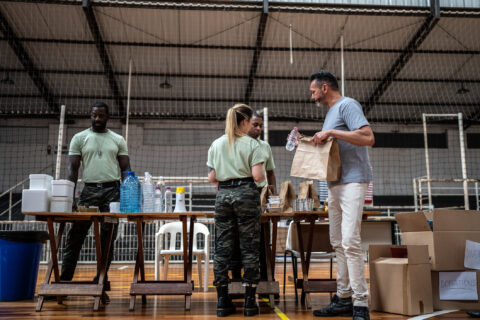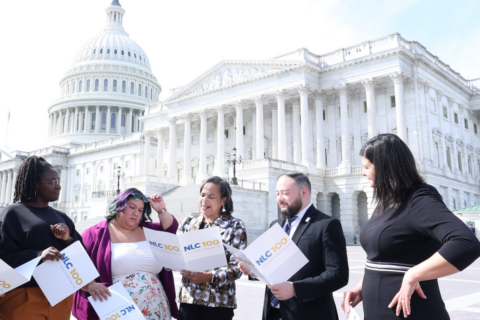Across the country, local governments have been exploring ways to better align the work of their police officers with the needs of their communities. From police reforms that deemphasize police as the primary first responders to adopting holistic and inclusive public safety programs, local governments are leading on creating alternative response programs that can respond to non-violent, non-criminal incidents.
Between 2020 and 2022, 62% of the largest 50 cities formed at least one appropriate response program. This requires cities to build a more inclusive public safety program, in which police may not always be the primary first responder to someone in crisis.
While police officers can help support alternative responders to ensure their safety and the safety of the residents, their response should be limited to responding to or preventing violence (and even then, cities are working to advance community violence interventions to supplement policing) and not providing social and community support services which could take a long time to resolve. To accomplish this, local governments need to begin creating alternative response programs that can provide immediate 24/7 response to non-violent non-criminal incidents.
NLC’s toolkit “Reimagining Public Safety A Toolkit for Cities and Towns” provides strategies that local governments are implementing to diversify the public safety workforce and increase community safety. There are examples of cities that are driving down crime and violence by implementing innovative policies.
- The 24/7 civilian mobile crisis response program CAHOOTS in Eugene, Oregon is dispatched to roughly one-fifth of 911 calls. The Eugene Police Department found that CAHOOTS saves the city $2.2 million in officer wages every year and only costs $820,000 FY22.
- Denver’s Support Team Assisted Response (STAR) program, operated by the Denver Department of Public Health & Environment, is expanding to 24/7 service. STAR cost four times less to respond than police response, lowering the average for each incident from $646 to $151. In 2020, Denver had 1,400 fewer criminal offenses (34 percent decrease) in neighborhoods with STAR service. STAR program leaders’ goal is to respond to more than 10,000 calls a year.
In our brief, “Using ARPA Funds to Reimagine Public Safety,” local leaders get an overview of local public safety staffing issues and details how local governments are spending American Rescue Plan Act (ARPA) funds to bolster their public safety workforce recruitment and retention efforts. The brief also provides insights into how cities have explored using ARPA funds to hire violence prevention officers and social workers as alternatives to traditional policing.
Changing how local governments respond to non-criminal and non-violent incidents will not happen overnight. State and local laws that dictate who is required to respond to 9-1-1 will need to be amended. The federal government, states, and local governments will need to invest considerable resources to build 24/7 alternative response programs. And, until there are more federal, state, and local investments in social and mental health response programs, police will continue to be the primary responders to these types of incidents.
Many cities have begun re-imagining their public safety programs to include alternative responses to social and mental health calls. However, to truly make a systematic nationwide change, the federal government must help state and local governments redefine who is a first responder and take some of the burdens off police officers whose primary responsibilities are to enforce laws and prevent crimes and violence.
Local governments should consider providing additional resources to their public safety programs to ensure the police are not the only ones responding to non-violent and noncriminal incidents. NLC encourages local leaders to continue to invest local, state, and federal funds to innovate their municipal public safety workforce, including the retention and recruitment of police officers and other public safety responders to strive for better community outcomes.
Police are “law enforcement” officers, and yes this is a part of public safety, but they should not have responsibilities beyond their training. Requiring them to be social workers, mental health providers, counselors, and caretakers is outside the scope of their primary duties. We know they do this daily, but should they be required to?
Additional NLC Resources
Explore NLC’s resources to support municipalities in reimagining their public safety workforce.
- Mayoral Network on Community Safety and Violence Prevention Summary Report
- Spreading and Scaling Innovative City Approaches to Address Mental Health, Substance Use and Homelessness
- Working Across Systems for Better Results: City Efforts to Address Mental Health, Substance Use, and Homelessness Through Emergency Response and Crisis Stabilization
- Federal Funding Opportunities: Justice and Mental Health
- Responding to Individuals in Behavioral Health Crisis via Co-Responder Models: The Roles of Cities, Counties, Law Enforcement, and Providers Brief








